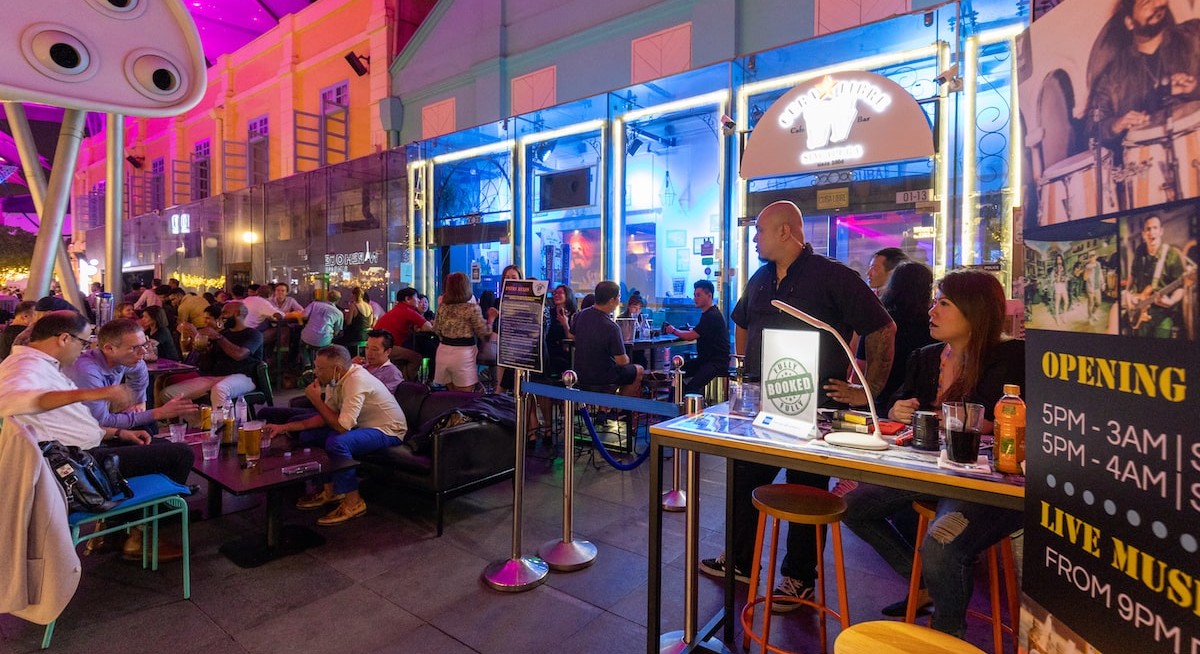It is now common to see long lines at the Woodlands Checkpoint (land borders reopened on April 1) or at nightlife institution Zouk in Clarke Quay (all nightclubs reopened from April 19). After being shut down for two years, the move to end Singapore’s pandemic era curbs — put in place in February 2020 — is a step closer to normalcy as the city-state moves ahead with its “living with Covid-19” strategy.
“With these changes, we can now have a well-deserved breather after two very difficult years of fighting the virus,” Finance Minister Lawrence Wong said on April 22. “Let’s always remember we are getting closer to the finish line, but the race is not over... and the pandemic is certainly not over.”
In the meantime, Singapore is the first major economy in Asia to remove all restrictions for fully vaccinated travellers entering the republic as the government tries to restore the aviation and tourism industries that had been hit by Covid-19, reports Bloomberg.
There are certainly signs that things are getting back to normal. On May 17, the Singapore Tourism Board reported that 294,300 visitors came here in April. It is a spike of 1,043.5% over the same month last year, and a considerable surge over the 121,200 tourists reported in March.
See also: Bangkok Airways seeks 30 new jets as White Lotus boosts tourism
Passenger traffic at Changi Airport reached more than 40% of pre-Covid-19 levels this month, compared with less than 20% in March, Transport Minister S. Iswaran said on May 17. The government aims for the airport to handle at least 50% of pre-pandemic visitor numbers later this year.
Meanwhile, Changi Airport is reportedly looking to fill 6,600 positions to take advantage of the travel rebound, while Singapore Airlines (SIA) will gradually restore its pilots’ basic salaries to pre-pandemic levels by January next year.
This month, amid a wider global sell-down, shares of SIA have held steady, as investors await positive news of the recovery at the full-year briefing on May 19 (see story on page 11). In their May 17 note, DBS Group Research analysts Paul Yong and Jason Sum describe the pick up as a “colossal pent-up demand” for air travel.
See also: Thailand plans to cut tourists’ visa-free stays to 30 days
Cautiously optimistic
The outlook may be rosy, but industry players remain cautiously optimistic. The Pacific Asia Travel Association (PATA), for example, is projecting international visitor arrivals into Asia will grow by 100% between 2022 and 2023, as demand peaks before returning to more normal growth rates over time.
Data from global travel service provider Trip.com Group also shows that from April 1 to May 5, the total orders made on the website in the Asia Pacific region grew by 54% y-o-y, a significant increase from March figures, which showed a 22% y-o-y increase. Thailand took the lead with overall bookings— flights, accommodation, car rental and tours — increasing 85% y-o-y on Trip.com’s platform, while flight booking alone grew 72% y-o-y and accommodation bookings up significantly by 130% y-o-y.
Peak season travel
The peak holiday season period could also inspire another travelling wave. A report from Skyscanner, the travel-booking service owned by the Trip.com Group, suggests that many international travellers want to spend more and travel further to make up for a lack of travel during the pandemic period.
While cheering the boost to the previously beleaguered sectors, economists warn of headwinds that might cause a drag to the recovery. Maybank economists Chua Hak Bin and Lee Ju Ye note that regional economies are seeing the growth from consumer-facing and tourism-related services such as retail trade, accommodation and food services.
“Asean’s reopening is providing some tailwind to the recovery, but growing global headwinds will likely overwhelm and dampen Singapore’s growth momentum by the second half,” they caution, citing manufacturing and trade-oriented services as the likely areas turning softer in the quarters ahead. This is due to inflationary pressure further worsened by the on-going war between Russia and Ukraine, as well as China’s continued Covid-19 restrictions.
To stay ahead of Singapore and the region’s corporate and economic trends, click here for Latest Section
As central banks try to fight inflation — which has hit close to double-digit levels even in developed economies such as the US and UK — higher rates will inevitably result in soaring costs but lower returns.
For Singapore, Chua and Lee say the reopening of borders can cut both ways. With more Singaporeans travelling abroad, domestic spending could see a decline. Overall, they expect a 2022 GDP growth forecast of 2.8%, below the Ministry of Trade and Industry’s forecast range of 3% to 5%. They also expect the official GDP forecast to be downgraded to 2% to 4% on the back of global headwinds.
Agreeing, RHB Group Research is reiterating its barbell portfolio approach for 2Q2022 with a mix of growth and defensive stocks amid global economic headwinds. Analyst Shekhar Jaiswal says that Singapore’s reopening of international borders and the reviving of the domestic economy — and the government’s assurance it plans to keep the economy open even if Covid-19 cases spike — bodes well for business and tourism.
“We maintain its equity market outlook will depend on how well stocks and sectors deal with supply chain disruptions caused by the Russia-Ukraine war and China’s zero Covid-19 policy, uncertainty over the rate of rise in inflation and the resultant expectations of rapid rises in interest rate hike for rest of 2022,” says Jaiswal.
The demand is certainly giving the hard hit sectors a boost. And now, many players are looking forward to rolling good times, again. The Edge Singapore takes a look at how some companies are preparing themselves for the new normal.
Photo: The Edge Singapore/ Samuel Isaac Chua




